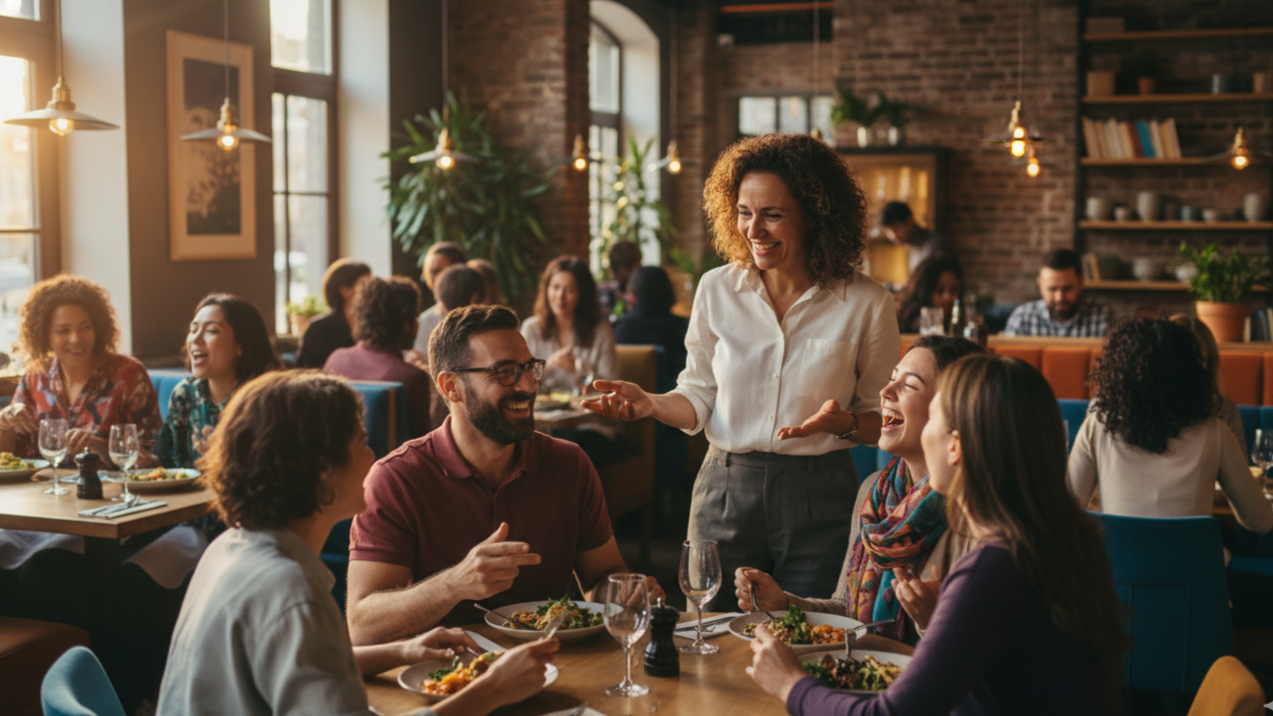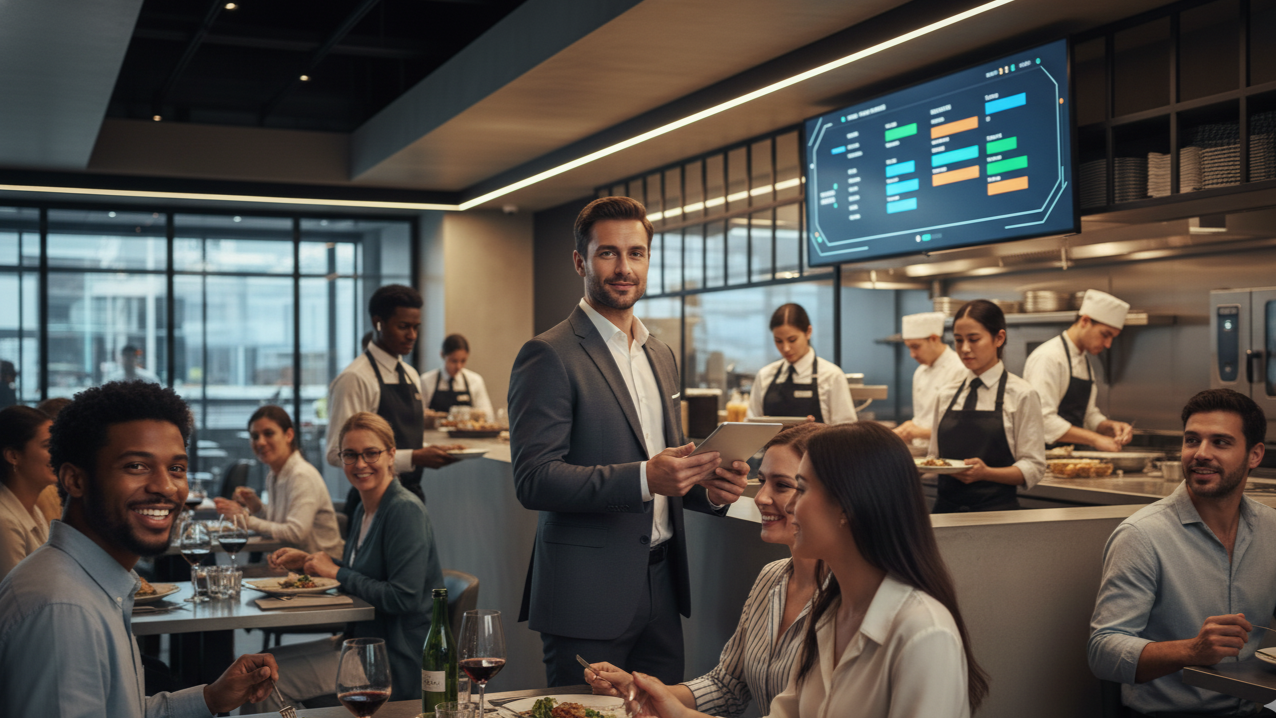
Fast Food vs Fast Casual: What Restaurant Owners Need to Know Before Choosing a Model
If you're launching a new restaurant or rethinking your current setup, one of the biggest decisions you'll face is choosing the right dining model. Fast food vs fast casual, what’s the real difference, and which one makes the most sense for your business? It's not just about how quickly food is served. It's about customer expectations, operational complexity, margins, staffing, and even how your tech systems function.
Post-pandemic dining habits have shifted. Guests are craving convenience, but they also want quality and experience. This has made the line between fast food and fast casual blurrier than ever. But choosing the right model isn’t a branding exercise; it shapes your costs, revenue potential, and day-to-day operations.
In this blog, we’ll break down both models in simple terms. You’ll see what sets them apart, their pros and cons, and how all-in-one applications like NOVA can help streamline whichever path you take.
What Is a Fast Food Restaurant Model?
Fast food is built for speed. Customers walk in, order from a simple, standardized menu, and get their food in minutes. No fuss. No frills. The entire system is designed around efficiency and volume. Think burgers, fried chicken, tacos, served in paper wrappers, at lightning speed, with little to no interaction with staff beyond the counter.
Behind the scenes, the fast food model runs on tight margins and high throughput. Operations are heavily systemized: minimal prep, pre-set portions, centralized purchasing. It’s all about keeping costs down and moving customers through quickly.
Some of the biggest names in the restaurant world, McDonald’s, Burger King, and Taco Bell, run on this model. And it works, especially in high-traffic areas. If your goal is scale and speed, fast food delivers. But it comes with its own set of challenges, which we’ll explore soon.
What Is a Fast Casual Restaurant Model?
Now let’s talk fast casual. It's a step up from fast food, literally and figuratively. You still order at the counter, but everything feels more elevated. The food is fresher, often made-to-order, and the ingredients are typically marketed as healthier or higher quality.
Customers might spend a few extra dollars here, but in return, they get more customization, better presentation, and a more pleasant dining environment. Think Chipotle, Panera Bread, and Sweetgreen. There’s often some light table service, like staff delivering food or bussing tables, but not full service like a sit-down restaurant.
The fast casual dining restaurant model thrives on giving customers a better experience without the wait or formality of traditional dining. It’s about offering value without compromising quality. For restaurant owners, this means more operational complexity, but also a shot at building strong brand loyalty and higher ticket sizes.
Key Differences Between Fast Food vs Fast Casual
Here are some key differences between fast food and fast casual:
These aren't just surface-level differences. Each one influences your hiring, your kitchen layout, your inventory, and even the way customers talk about your brand.
Pros and Cons of Fast Food vs Fast Casual
Let’s be real, there’s no perfect restaurant model. Both fast food and fast casual come with their own advantages, but they also demand specific types of effort. The right choice depends on what kind of business you're trying to build, and how much complexity you're ready to take on.
- Fast Food
Pros
- High volume, fast turnover: If your restaurant is in a high-traffic area, near highways, transit hubs, or dense commercial zones, fast food lets you serve hundreds (or thousands) of customers daily with speed.
- Familiarity breeds comfort: Fast food thrives on consistency. People know what they’re getting, and that comfort leads to repeat business, even if loyalty is more to the product than the brand.
- Easier to scale: Because the systems are standardized, opening new locations can feel like flipping a switch. Franchise restaurant business models in particular benefit from the fast food playbook.
Cons
- Margins are razor-thin: You’re often competing on price, which means every cent matters. Ingredient costs, labor costs, and packaging all eat into profits. One small mistake in forecasting, and it stings.
- Price pressure is constant: The battle for the lowest-cost combo meal never ends. Promotions, discounts, and “value menus” can drive volume, but they squeeze your bottom line.
- Customer loyalty is low: People don’t usually go out of their way for a fast food brand unless there’s a major emotional connection or nostalgia. A recent survey found that 37% of consumers have become less loyal, or even switched fast-food brands, within the last year.
- Cost-cutting is relentless: Success often requires squeezing costs through automation, labor reductions, and simplified menus, which can sometimes affect quality or employee morale.
- Fast Casual
Pros
- Stronger brand connection: Fast casual customers tend to choose your restaurant intentionally, not just because it's convenient. They like the food, the brand values, the vibe, and they come back for that.
- Higher average spends: Customers expect to pay a little more, which means you can offer better ingredients or unique items while still protecting your margins.
- Perception of quality: Whether it’s the sourcing of your ingredients, the plating, or the story behind the concept, fast casual brands often enjoy a “healthier,” more premium perception.
Cons
- Higher operating costs: Fresh ingredients, more skilled staff, better packaging, and nicer store design all add up. Overheads can climb fast, especially if you want to create a consistent, elevated experience.
- More demanding hiring: It’s not just about filling orders, you need people who understand your menu, your story, and your customer experience. That often requires longer training and higher pay.
- Scaling is slower: With more complex operations and a greater focus on brand culture, expanding fast casual locations takes more time and care than copying a fast food setup.
If your goal is to expand quickly, keep costs predictable, and run a tight operation with a standardized model, fast food might be the better fit. But if you’re aiming to build a memorable brand, attract more thoughtful diners, and create a space that people connect with, fast casual could be your sweet spot.
What to Consider When Choosing Your Business Model?
The choice between fast food vs fast casual should align with your vision, but also your market. Here are the key factors to think through:
1. Location and Demographic
Are you near office crowds looking for cheap, quick meals? Or are you in a neighborhood where health-conscious families are willing to pay more for better food?
2. Operational Complexity
Fast food is more plug-and-play. Fast casual requires more planning, more prep, training, and quality control. Do you have the bandwidth to manage that?
3. Brand Positioning
How do you want your brand to be perceived? If it’s all about speed and affordability, fast food works. If it’s about freshness, lifestyle, or experience, fast casual is the better match.
4. Tech Readiness
Regardless of the model, tech is non-negotiable today. From self-order kiosks to mobile ordering and integrated kitchen displays, platforms like NOVA can power both fast food and fast casual operations efficiently. The difference lies in how you implement them.
The Rise of Hybrid Dining: Merging Fast Food Efficiency with Fast Casual Quality
A growing number of restaurants are exploring hybrid restaurant business models, combining the speed of fast food with the quality and experience of fast casual. Hybrid models are appealing because they let you tap into multiple customer expectations. But they require smart planning and the right tech stack to work.
Features like dynamic menus, self-service ordering, and real-time kitchen communication, many of which NOVA offers, help keep both speed and experience balanced. It’s not an easy model to master, but when done right, it can lead to stronger margins and brand love.
Final Thoughts
When it comes to fast food vs fast casual, there’s no universal winner. It’s about finding the best fit for your goals, your location, and your team. What matters most is clarity. Know what your customers expect, what kind of team you want to build, and how you’ll use tech to keep operations smooth.
NOVA is a modern restaurant management platform designed to simplify and streamline operations for fast food, fast casual, and hybrid restaurants. From kitchen coordination to inventory, staff management, and real-time analytics, NOVA brings everything under one intuitive system.
Here’s how NOVA sets you up for success
- Omnichannel ready: Accept in-store, kiosk, mobile, and online orders; all synced in one place. No more juggling apps or losing orders in the chaos. Plus, get a fully functional, beautifully branded online store that’s built to take direct orders. It’s fast, easy to set up, and completely yours
- Still Want 3rd-Party Delivery? No Problem: NOVA lets you stay connected to platforms like Uber Eats, DoorDash, Grubhub, and more, so you can reach more customers without any operational chaos. Everything stays in sync, and you stay in charge.
- Simplified staffing: Fast onboarding, intuitive interfaces, and smart scheduling tools make team management easier across both restaurant business models.
- Menu flexibility: Run standardized menus for fast food or customizable options for fast casual; NOVA handles both with ease.
- Smart insights: Track performance, identify bottlenecks, and make better decisions with real-time data, not guesswork.
- Marketing That Practically Runs Itself: NOVA helps you stay top-of-mind with smart, automated campaigns tailored to what your guests actually like. It tracks their habits, favorite orders, and visit patterns, so you can bring them back with the right message at the right time. All without lifting a finger.
- Hardware That Works as Hard as You Do: From self-order kiosks to kitchen displays and POS terminals, NOVA’s hardware lineup is built for high-volume performance, lightning-fast response, and a smooth guest experience, shift after shift.
- Scales with you: NOVA grows with your business, without the tech headaches.
No matter which model you choose, fast food vs fast casual, running a restaurant today demands smart systems, clear data, and operational control. Tools like NOVA are designed to support both types of businesses.





